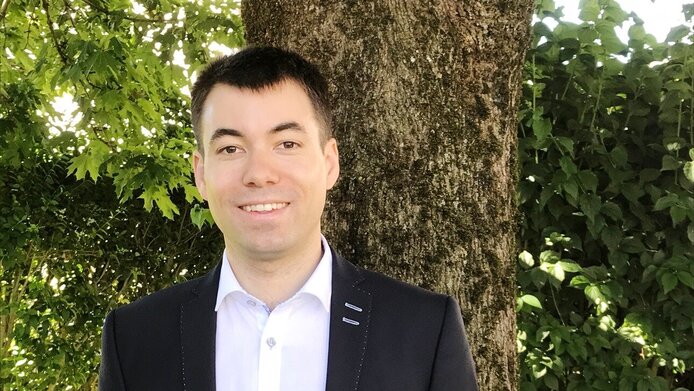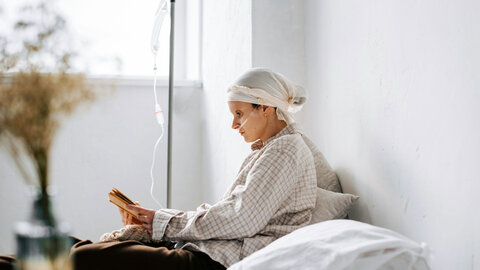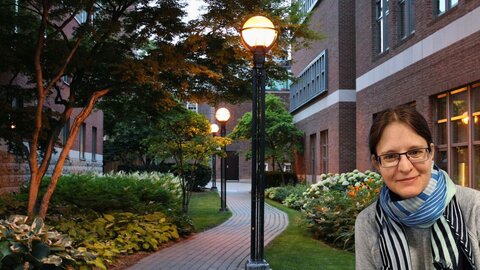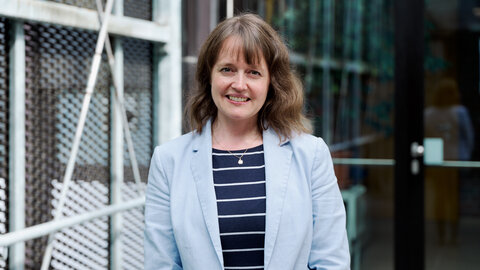Grüezi from Switzerland

Today we know that cancer cells come in incredible variations, that among them are also cells of stem-cell character and that no two tumours are identical. This calls for new therapeutic approaches, many of them targeting the therapeutic use of the body’s own (“healthy”) cells in the tumour tissue.
Tumour microenvironment as focus of cancer research
For tumours to grow and develop metastases, a complex interaction between malignant and non-transformed body cells is required, which collectively constitute the tumour microenvironment. Connective tissue cells, so-called fibroblasts, play an important role in that context and foster tumour growth in various ways, for instance by producing growth factors and suppressing the immune response. Within my present Erwin-Schrödinger grant from the Austrian Science Fund FWF, I study breast cancer and focus on a genetically defined population of tumour-associated fibroblasts that is central for disease progression and provides also a niche for so-called cancer stem cells. This makes these fibroblasts an interesting therapeutic target structure, particularly with a view to fighting therapy resistance and a recurrence of the disease. The explanation of why I ended up at the Kantonsspital St. Gallen is simple: it is at this hospital that internationally unique models for the study of certain fibroblast populations are being developed.
Research links oncology and immunology
Another reason for me to go to St. Gallen was the tremendous immunology expertise one can find here. The Institute of Immunobiology headed by Professor Burkhard Ludewig has been specialising in the investigation of fundamental immunological process for many years and thus offers a sterling environment for studying issues concerning oncology and immunology. Actually, one can see that the disciplines of oncology and immunology are currently merging and that immuno-therapeutic approaches are gaining importance in cancer medicine. As a molecular oncologist I have thus found a very interesting and instructive environment here in St. Gallen.
Small, but it packs a punch
The Kantonsspital St. Gallen is the main healthcare provider for East Switzerland and offers a small but refined research environment. Local collaboration with other disciplines and departments is not only very common but also very efficient and easy to initiate. What I appreciate at the Institute of Immunobiology is not only the modern infrastructure, but also the friendly work atmosphere and the professional and intercultural exchanges. Apart from immunologists, molecular biologists and geneticists, this institute also employs physicians and bio-informatics experts, which beyond doubt makes work exciting and opens the way for interdisciplinary synergies.
St. Gallen region – Lake Constance
St. Gallen also has a lot to offer outside of work. It is a small but vibrant town going back to Saint Gallus (around 600 AD). It is well known on the one hand because of its history as a textile centre, but also because of its university that specialises in business studies and enjoys a fine international reputation. The old town centre offers great sights, and particularly the Abbey library of St. Gallen merits a visit. In culinary terms, the Olma bratwurst is a local specialty, which is actually very tasty and traditionally comes in greaseproof paper accompanied by Bürli bread. – Adding mustard, by the way, as one would do in other countries, is an absolute no-no. Sport lovers and fans of the outdoors will also find things to enjoy in St. Gallen. – Not only are you in the midst of the Alps, but it is only a short distance to Lake Constance which is reputed to enjoy an (almost) Mediterranean climate.
Thank you so much!
I would like to use this opportunity to express my warm thanks to the FWF for the resources granted to me – or, as they say here in Swiss German: merci viilmool! Without the support of the Austrian Science Fund, many young and ambitious scholars would find it impossible to get to top international research locations and realise promising projects. It is imperative to maintain this type of research support for future generations – also in order to provide a sustainable boost to Austria as a venue of science and innovation. Thanks must also go to Professor Burkhard Ludewig for the optimal conditions I am being offered in St. Gallen and to Professor Günther Gastl from my “home department”, Internal Medicine V, at the Medical University of Innsbruck, who gave me comprehensive support during the planning and submission phase and was instrumental in making this possible.





